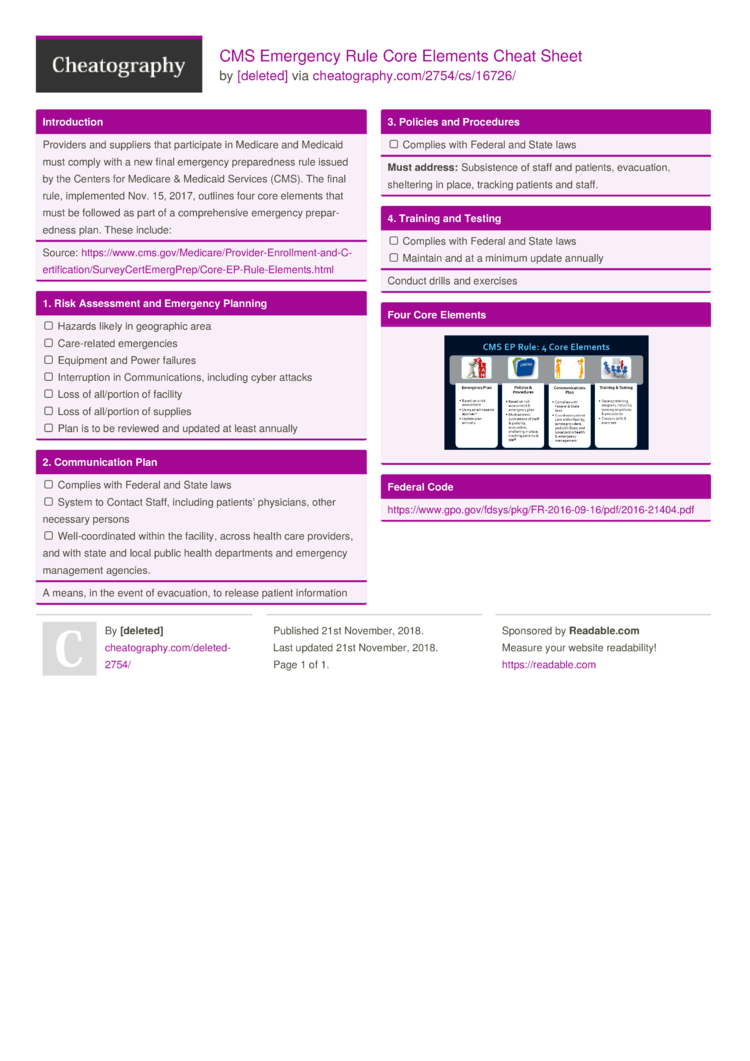

- 4 ELEMENTS OF EMERGENCY PREPAREDNESS REQUIRED BY THE CMS FINAL RULE UPDATE
- 4 ELEMENTS OF EMERGENCY PREPAREDNESS REQUIRED BY THE CMS FINAL RULE FULL
This new regulation went into effect on November 16, 2016. For example, there are additional requirements pertaining to emergency systems applicable to Hospitals, Long-Term Care Facilities, and Critical Access Hospitals. The exact CMS emergency preparedness program requirements will vary based on the characteristics of each provider and supplier type.
4 ELEMENTS OF EMERGENCY PREPAREDNESS REQUIRED BY THE CMS FINAL RULE FULL
The testing requirements address topics such as conducting full scale exercises, conducting additional testing, and the format of each testing type. The training program requirements address topics such as who needs to be trained, the frequency of training, assessing knowledge, and documenting the training conducted. Develop and maintain a training and testing program based on the emergency plan, the risk assessment, the communication plan, and the policies and procedures. The hospital must develop and maintain an. The policies and procedures must be reviewed and updated at least annually and address, among other items, subsistence needs for staff and patients (e.g., food, water, medical supplies), a system for tracking the location of on-duty staff and sheltered patients, emergency staffing strategies, and arrangements to transfer patients. The emergency preparedness program must include, but not be limited to, the following elements: (a) Emergency plan.

The new regulation requires adequate planning and establishing of a more consistent response by providers and suppliers. This rule impacts seventeen different types of Medicare participating providers and suppliers. CMS published a final rule relating to new federal emergency preparedness requirements. On September 16, 2016 the Centers for Medicare and Medicaid Services (CMS) made Be Prepared a law. The motto of the Boy Scouts is Be Prepared.
4 ELEMENTS OF EMERGENCY PREPAREDNESS REQUIRED BY THE CMS FINAL RULE UPDATE
( Check out our latest update on emergency preparedness, based on the 2019 final rule.)


 0 kommentar(er)
0 kommentar(er)
